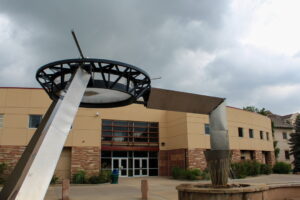
A researcher at Colorado State University has developed a potential approach for identifying and understanding dark matter using the soon-to-be-built gigantic particle detectors at the international Deep Underground Neutrino Experiment (DUNE).
A newly published paper in Physics Review Letters by Assistant Professor Joshua Berger and a partner at the University of Texas at Austin describes unique signals that could be produced if a certain class of particles interacts with atomic nuclei. Specifically, they are looking for the large — by particle physics standards — amount of energy released when dark matter hits a proton and destroys it. That release of energy could be visible with the set of large-scale, highly sensitive DUNE detectors that are set to become operational in 2028. If their approach can help identify those interactions, the findings would inform the nature of dark matter — the as-yet undiscovered missing component in the universe.
Berger said dark matter is a substance that appears to make up most of the universe’s mass and energy. While researchers have not yet been able to see this matter or its interactions, they know it exists due to its gravitational pull, which seems to be instrumental in the ways galaxies form, organize and expand. Berger said he is hopeful that the detectors at DUNE will be able to pick up evidence of dark matter in a way that was not previously possible using his theory.
“Everything we know about the physics of the universe points to roughly 85% of matter being dark. However, no light bounces off it, so you can’t ‘see’ it, and none of the known particles seem to make up this matter — nothing is sufficiently dark,” Berger said. “We want to know what makes this dark matter different from the matter that makes up you, me and everything we can see in the universe. We are talking about building a better understanding of the fundamental building blocks of the universe.”
While Berger is interested in dark matter, the DUNE experiment should help answer many other decidedly huge cosmic questions.
Run by the Department of Energy’s Fermilab, the project primarily seeks to unlock the mysteries of neutrinos, which are present everywhere. When completed, the facility will track the progress of neutrinos being beamed from Illinois through the Earth to an underground detection facility in South Dakota about 800 miles away. Understanding and tracking the progress of those harmless particles from one point to another through matter will help researchers realize Albert Einstein’s dream of the unification of forces, watch for neutrinos emerging from an exploding star, or better understand the formation of stars or black holes.
The DUNE collaboration includes more than 1,400 scientists and engineers from over 200 institutions in 36 countries. Mass production of its components has begun, and testing of the technologies underlying both detectors is underway.